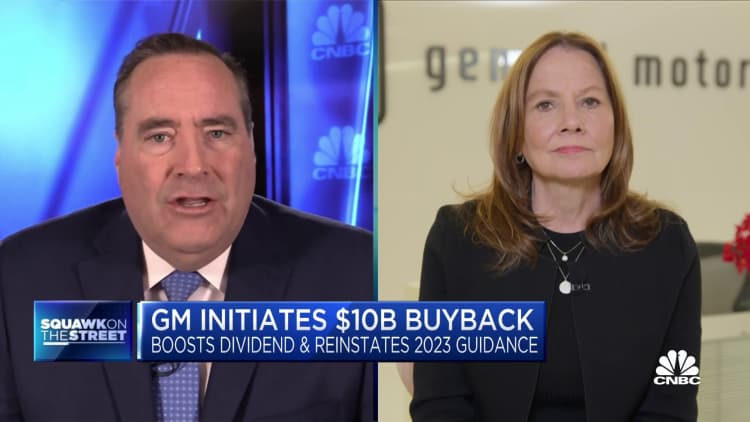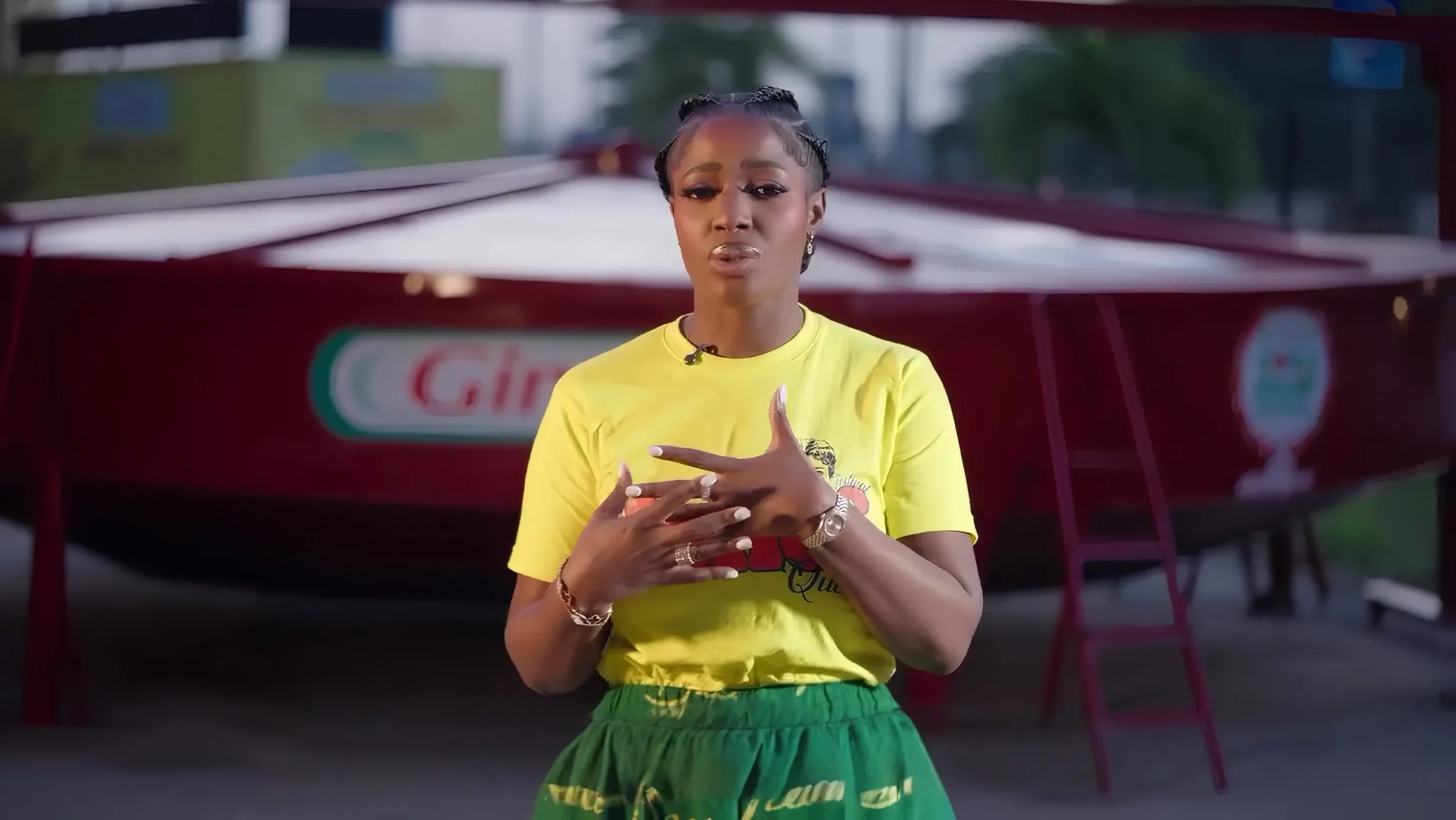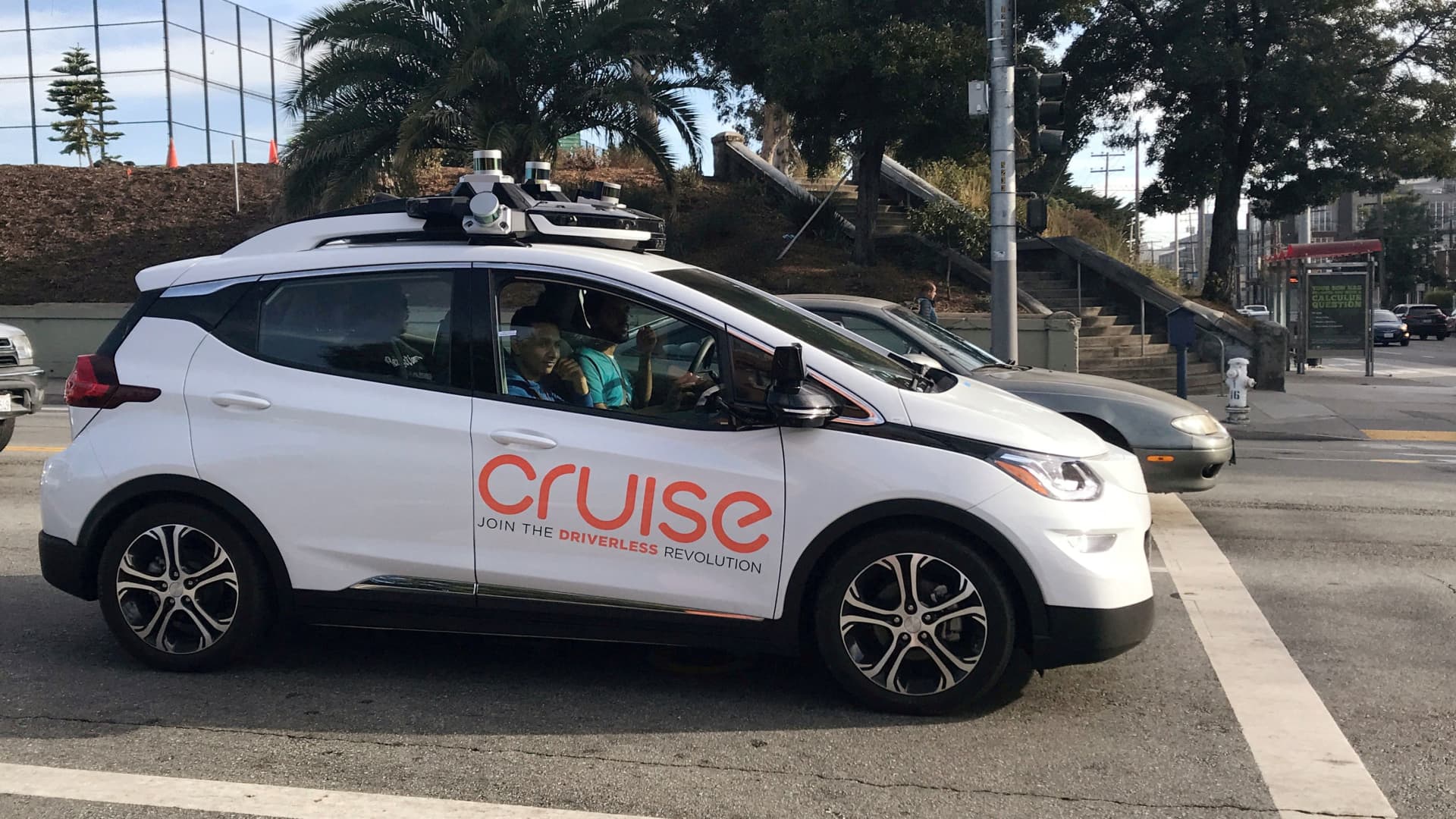A Cruise self-driving car, which is owned by General Motors, is seen outside the company’s headquarters in San Francisco.
Heather Somerville | Reuters
General Motors’ Cruise autonomous vehicle unit has dismissed nine “key leaders” amid ongoing safety investigations sparked by an October accident in San Francisco, according to an internal message obtained by CNBC.
The departures include leaders from Cruise’s legal, government affairs, commercial operations and safety and systems teams, according to the company-wide message, which GM and Cruise spokespeople confirmed was authentic.
The message said “new leadership is necessary” for the company to regain trust and operate “with the highest standards when it comes to safety, integrity, and accountability.”
Cruise’s troubles are the latest for the self-driving vehicle industry. Commercializing autonomous vehicles has been far more challenging than many predicted even a few years ago. The challenges have led to a consolidation in the autonomous vehicle sector after years of enthusiasm touting the technology as the next multitrillion-dollar market for transportation companies.
The shakeup at Cruise, which was first reported by Reuters, follows an initial analysis of the company’s response to an Oct. 2 accident involving one of Cruise’s robotaxis, which dragged a pedestrian after the person was struck by another vehicle.
Following the accident, the California Department of Motor Vehicles suspended the deployment and testing permits for its autonomous vehicles in late-October. Cruise then followed up with pausing all roadway operations in the U.S.

The company also faces regulatory pressure and fines for potentially misleading or withholding information about the accident. The National Highway Traffic Safety Administration and California Public Utilities Commission are probing Cruise and the incident.
GM CEO Mary Barra, who serves as chair of Cruise, last week in Detroit said the company is “very focused on righting the ship” at Cruise. Its actions include two ongoing external safety reviews that will guide the company’s path forward. They are expected to be completed in early 2024, she said.
“The personnel decisions made today are a necessary step for Cruise to move forward as it focuses on accountability, trust and transparency. GM remains committed to supporting Cruise in these efforts,” GM said in an emailed statement Wednesday.
The additional departures come roughly a month after Cruise CEO and co-founder Kyle Vogt and co-founder and Chief Product Officer Dan Kan both resigned.
This is also a setback for an industry dependent on public trust and the cooperation of regulators. The unit had in recent months touted ambitious plans to expand to more cities, offering fully autonomous taxi rides.
GM purchased Cruise in 2016. It then brought on investors such as Honda Motor, SoftBank Vision Fund, and, more recently, Walmart and Microsoft. However, last year, GM acquired SoftBank’s equity ownership stake for $2.1 billion.
GM executives, including Barra, had hoped the startup would be ramping up a driverless transportation network this year, and hoped Cruise would play a notable role in doubling the company’s revenue by 2030.
But thus far, Cruise has cost GM more than $8 billion since the company acquired it in 2016, according to public filings. The losses have been increasing annually, including $1.9 billion through the third quarter of this year.
Don’t miss these stories from CNBC PRO:




